Find testimonies, photos, plant care tips and share your successes, all right here!
Don't wanna be here? Send us removal request.
Photo
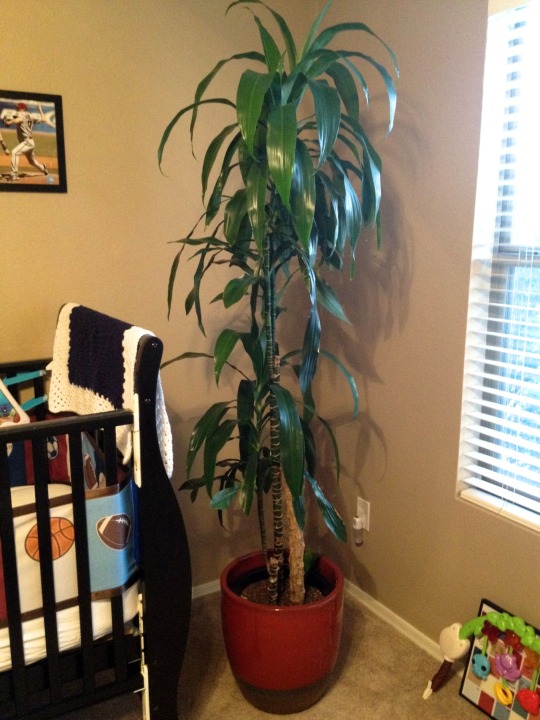
This was another rescue plant. This plant was given to me by a family member who thought maybe I could nurse it back to life. I left it in the "self-watering pot" it came in (not a LushPot) and really didn't see much growth or even healthy signs for the first 4 months. Finally, I bought a LushPot from our store and potted up this dying Janet Craig.
5 months later, this plant is doing incredible for a cast-away. You can see on top especially, lots of new growth and even some of the bottom stalks show beautiful growth. I have it by a window where it gets indirect sunlight from 6am to 6pm and that has been a huge help.
I've also been fertilizing once every month or so to make sure that the plant gets plenty of nitrogen in his diet. If there is a lack of nitrogen, the plant will siphon off nitrogen from old leaves to support new growth... this is one reason why a plant will shed leaves, for lack of nitrogen it it's diet.
So, while it's not as beautiful as the plants that have been in LushPots from the beginning, it goes to show that even that expensive plant that you think is just about dead, might be saved if you get it into a LushPot.
0 notes
Photo
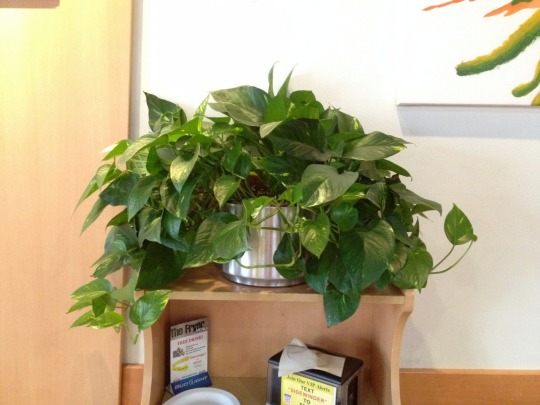
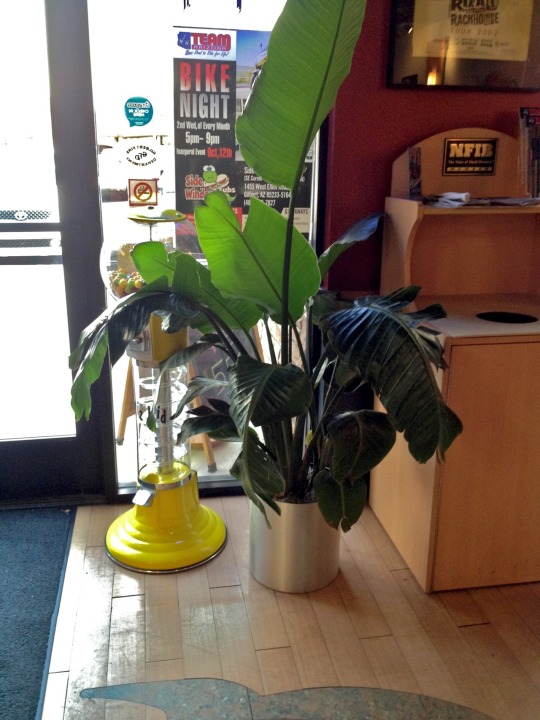
Thanks to an Arizona restaurant for getting these pictures to us. The report on these... they were potted up in LushPots in November of last year. The LushPots have been filled once a week and relocated all over the restaurant but the plants keep growing like champs. The store owner started this sandwich shop all on his own and had already killed several plants a year into the gig. He heard about LushPots and has been happy with not needing to buy new plants.
Another happy customer!
If you want to share your testimony with us you can write a review on any of our product pages, or email us, [email protected] and we'll get your review up for others to see. Pictures are appreciate too!
0 notes
Photo
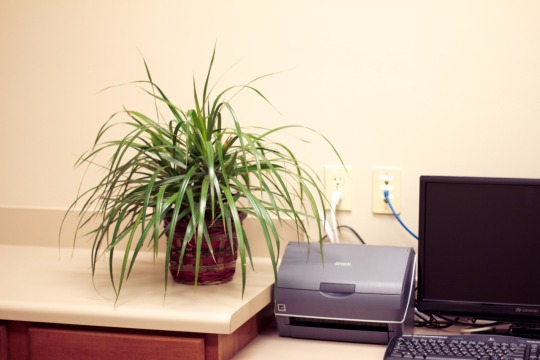
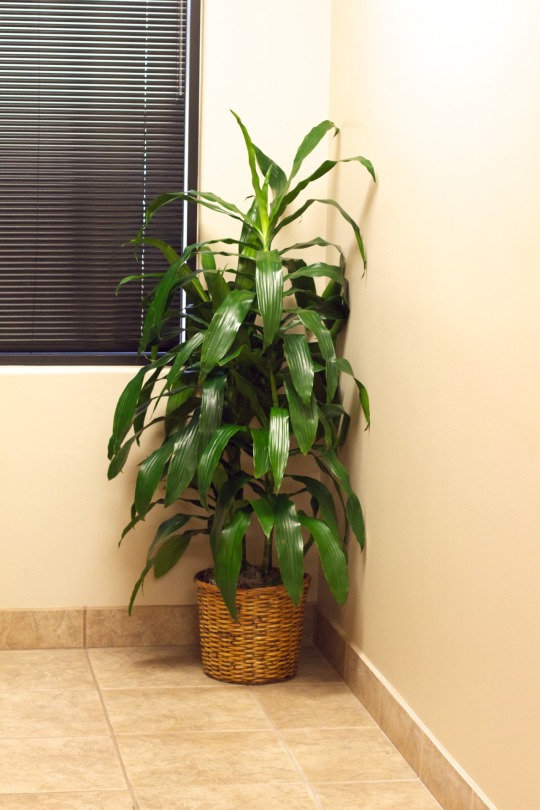
These photos come from a business located in Mesa, Arizona. In December, they purchased several LushPots and we also hooked them up with some top notch plants to go inside. 6 months later, we think they look awesome... but you be the judge. How do your plants usually look after 6 months?
0 notes
Photo
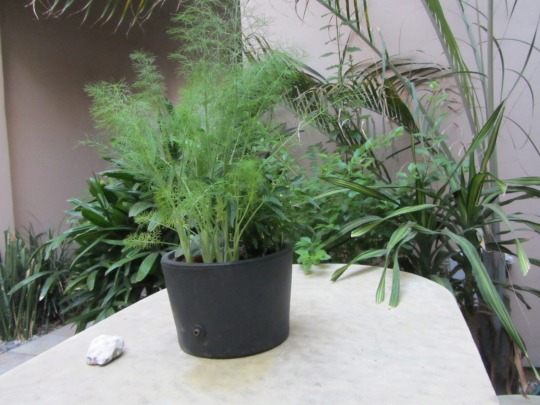
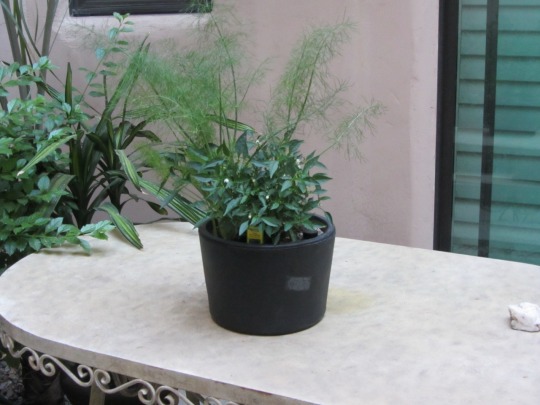
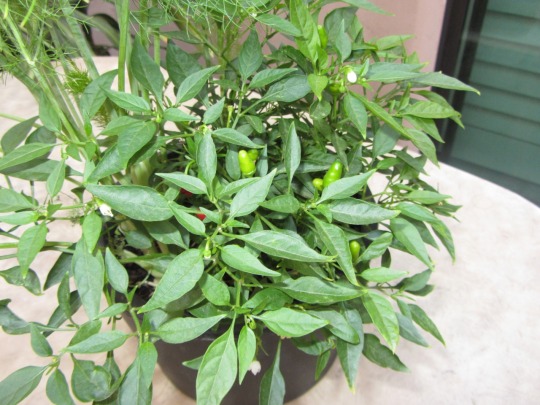
In this picture you'll see fennel grown from seed. There is also a pepper plant which was replanted from a 3" pot. There is a photo of the pepper plant on May 3 and then again n May 25. You can see the difference.
I get lots of questions from folks asking about growing herbs and other plants from seed. LushPots are great for this sort of thing. Also, if you are in urban living or unable to keep a garden, LushPots can provide a healthy environment to have your own garden even when you're on the 35th floor.
We also have a report from a customer growing a pineapple from seed using LushPots. What would you like to grow?
0 notes
Photo
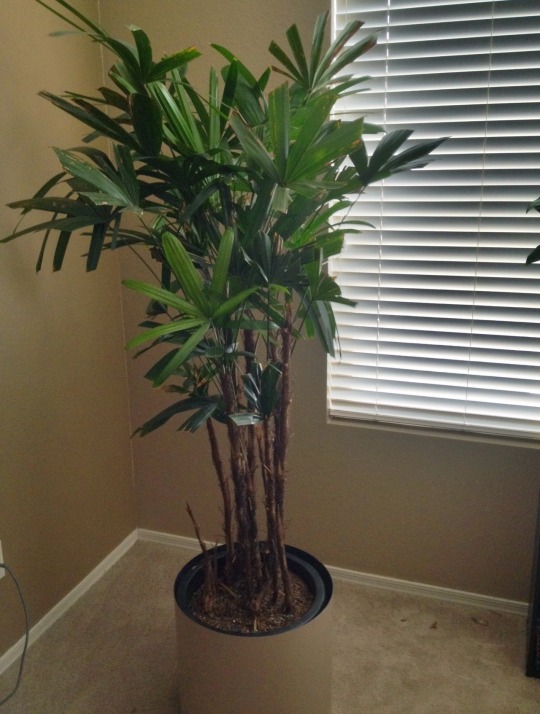
I wouldn't ordinarily post a plant that looks like this rhapis... however, there is a story. This plant has been in a LushPot since July of 2011. Prior to that it was in a "self-watering" planter you would find at any major retailer.
I went out of town for several weeks and when I returned my once full and beautiful rhapis palm had lost 2-3 stalks and was in need of having nearly every one of its fronds removed. I quickly potted this plant up in a LushPot and gave it about 4-5 months before even fertilizing it. Since that point, it has come back quite nicely, helping me save what would be a very costly plant to replace. This 14" rhapis palm would run me about $250-300 at any reputable nursery.
Do you have a plant that is in need of saving?
0 notes
Photo
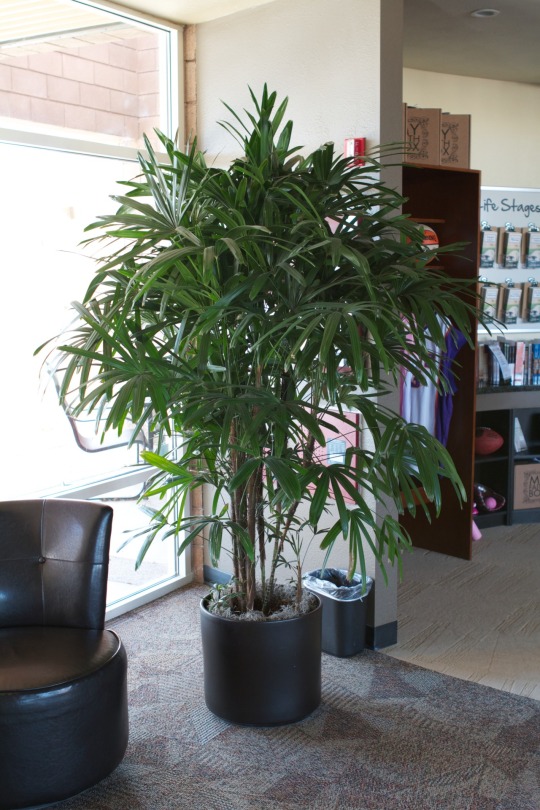
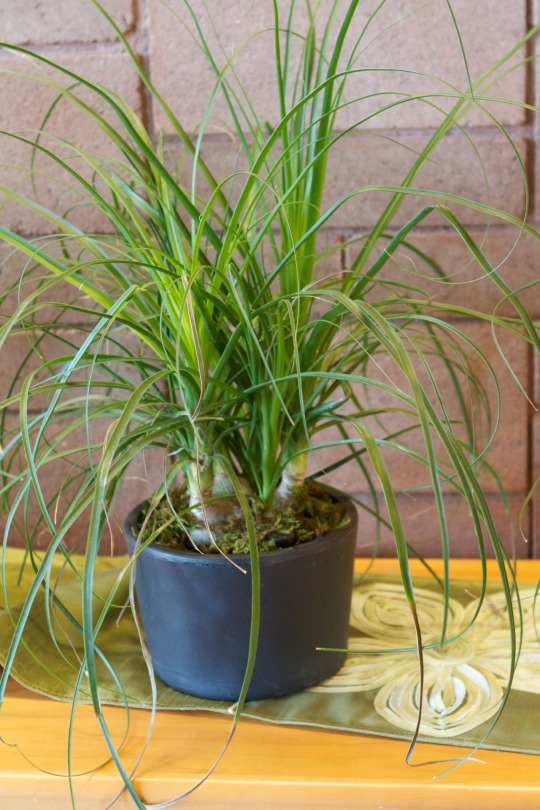
LushPots work great for non-profits. This rhapis was bought and installed in a LushPot in January. This non-profit organization had always been hesitant to invest in expensive plants because they couldn't afford to have it professionally cared for, nor did anyone at the organization have any expertise in caring for plants.
We are now nearing the end of May and as you can see from the picture the rhapis is doing wonderfully. I've also attached a picture of the pony tail palm that they used in a 7 inch LushPot.
LushPots helped this organization achieve professional quality with zero professional service bills. Once again, LushPots keep plants thriving!
0 notes
Photo
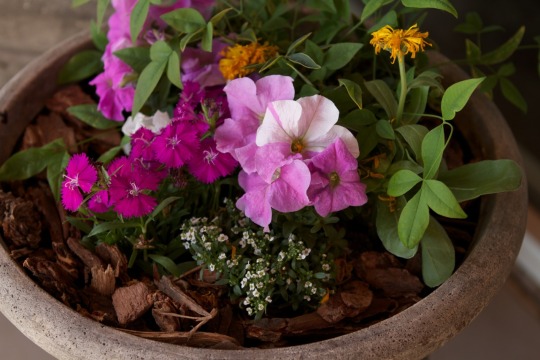
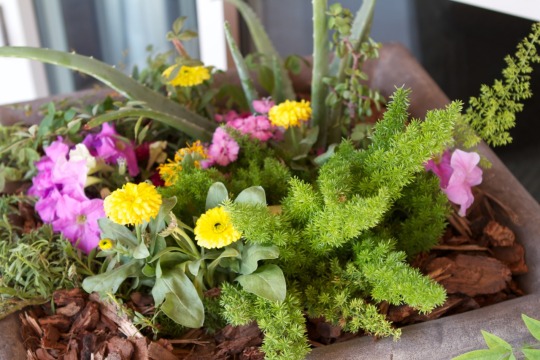
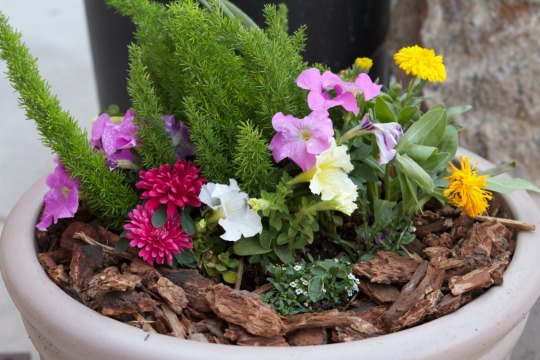
LushPots are great for seasonal flowers. The lifespan of what you plant will depend upon the environment surrounding it and it's light exposure. For instance, I had a geranium planted with alyssum surrounding it. It was a beautiful arrangement from February up until mid May. In Arizona, we started to hit 100° temperatures and those flowers just aren't designed for that type of sustained extreme heat. I'll plant something more suited for the hotter temperatures.
In the pictures above, one of our customers purchased some larger LushPots for the benefit of larger water reservoirs to limit the need to water to once a week at most through the summer. They potted up their flowers and after the first week, much of the color had died. After speaking with them, I discovered the reason for this was that the moisture sensor was placed too far below the floral roots and the flowers weren't getting enough water. Once the sensor was moved up and placed more shallowly in the pot, the newly potted seasonal flowers stayed lush 24/7.
How often are you watering your seasonal flowers? Once every few days? Everyday? Multiple times a day?
0 notes
Photo
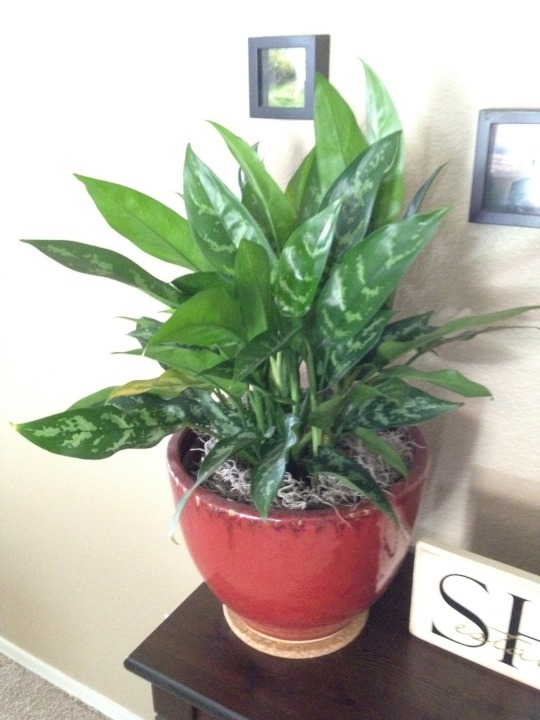
This ag has been in a LushPot for nearly 8 months. It has been in low to medium light about 20 feet away from any light source and has done great. I've rotated the plant every week so that all the leaves get an even amount of light exposure. I've fertilized it several times and it has sprouted a noticeable amount of new growth.
Do your plants look like this after 8 months?
0 notes
Text
Brown Thumb Solutions
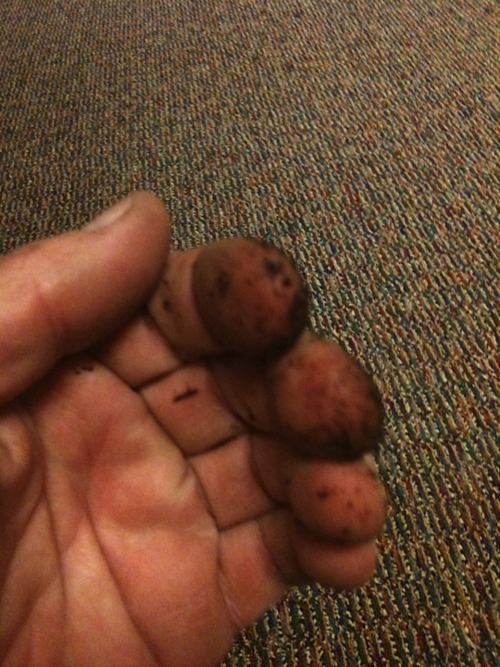
If you’re like me, you love having lush and healthy indoor and outdoor potted plants around your home to enhance your décor and beautify your living space. So, of course, you want real ones and not the plastic faux variety. But therein lies the challenge: keeping plants alive and healthy can be time consuming and complicated. Whether it’s over-watering, vacation-watering, maintaining nutrients, hot climates that quickly dry out planter soils, or simply not having enough time for plant care, many people decide not to keep live plants in their homes to avoid the hassle. However, you should not give up hope because there is an easier way to maintain container plants and remove those headaches. The answer is self-watering planter inserts.
Professional “plantscapers” and other plant business pros have been using self-watering planter inserts for years. They use them in planter installations at restaurants, shopping malls, business offices and other public areas to avoid the same issues faced by those of us at home. The pros use professional grade self-watering systems that reduce watering frequency via built-in reservoirs which only need to be refilled every two to three weeks (depending on the plant type and location). For home users, the reduction in watering frequency saves time and makes vacation-watering a non-issue as plants are watered from the reservoir while owners are away. Liquid nutrients can also be added to the reservoir water at any time to boost a plant’s healthiness. In addition, the self-watering systems regulate watering according to plants’ needs so novice or even experienced plant owners aren’t as challenged.
Professional grade self-watering inserts include a moisture sensor and regulation system that only allows water to enter the planter soil when it has dried out enough to once again need moisture. With my “brown thumb,” I have killed a number of beloved (and expensive!) container plants by over-watering them; a key plant care mistake prevented by self-watering systems. Moisture regulation helps plant owners avoid the “how much to water?” guessing game. However, buyers should be aware that some self-watering planters simply allow water to soak into the soil from below, without any regulation or constraints on how much, which can lead to soggy, over-watered plants. When considering a self-watering insert, it is important to bear in mind how the soil moisture content is regulated.
Take it from me, a committed plant owner who is daunted by the responsibility of plant care, that self-watering planter inserts will enable you to have the low-maintenance yet healthy house plants you have always wanted - without the hassle!
1 note
·
View note
Text
Let It Breathe

Plants take CO2 (carbon dioxide) out of the air and replace it with oxygen. Most homes have sufficient supplies of CO2 and the O2 (oxygen), that plants give off is a most beneficial byproduct of the plant.
The ideal temperature for most houseplants is in the range of 65-85 degrees. Although this is the optimal range temperatures outside of this range can be tolerated depending on the plant. Because there is such a wide array of plant types, there is not a "one size fits all" approach to matching plants with temperatures. To find out more specifics consult our growing Plant Bios. If you cannot find the plant you're looking for, please contact us.
0 notes
Text
Give Your Plant a Drink
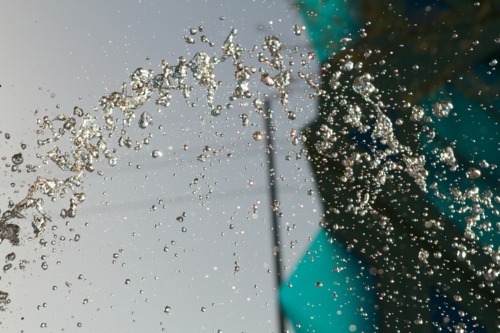
Water is one of the 5 essential requirements for plant growth. Good 'ole H2O is the main component and instigator of healthy plant growth. Though it is considered the most elementary part of plant care the work it does is far more complicated that simply quenching the plants' thirst.
Water is essential in keeping the plant turgid (stiff). It also plays a key role the photosynthesis process. It is also responsible for transporting nutrients throughout the body of the plant.
A consistent moisture level is very important to plant growth because the plants' roots will absorb the moisture out of the soil. The "professional" term for a consistent moisture level is medium moist. Medium moist is essentially a presences of 50% water and 50% air in the airspace fo the soil. (The airspace is accounted for by the amount of spaces that exists between the different soil particles). This 50/50 split is the ideal relationship for the roots to do their work.
It is necessary to have air present around the roots because roots need the presence of oxygen around them in order to function in the uptake of the water present in the soil. Too much water fills up all the airspace with moisture and there is little room for air. This situation is what causes root rot and almost always leads to the death of the plant.
On the other hand if the soil is allowed to dry out too much the very small roots, known as the hair roots will desiccate (dry up and disintegrate). The hair roots are the part of the root system that actually do the job of taking up the water. Their health is critical to optimum plant health. When they do desiccate it does tremendous damage to the plant which shows up in the leaves as brown spots, burning along the edges of the leaves and leaves turning completely yellow and falling off.
Proper watering is very difficult for the average and busy homeowner and inconsistency in the watering is the leading cause of plant deaths in the home environment. Thus the reason why we believe so much in the usefulness and effectiveness of a LushPot.
0 notes
Text
Kentia Palm
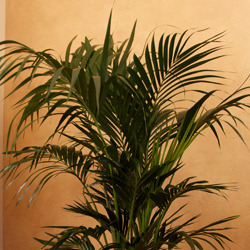
Kentia palms are among the most elegant, sophisticated plants in the world. They are highly favored particularly for their graceful, arching fronds. You will find them in the finest hotels, resorts and palaces of the world and anywhere elegance is the theme. In fact, it is one of the first plants to ever be used indoors.
Light
Kentias are somewhat tolerant of low light but their leaves will tend to droop in lower lighting. The ideal location is a eastern or western exposure where they can receive some strong light for a few hours a day.
Water
Kentias do not like to dry out, however, overwatering is the Number One cause of death with these palms. Needless to say, maintaining correct moisture levels is a bit trickier with this plant which makes it an ideal candidate for a LushPot.
Pests
If insects are found on Kentias they will most likely be scale which can be removed by hand.
0 notes
Text
How's That Plant Doing?
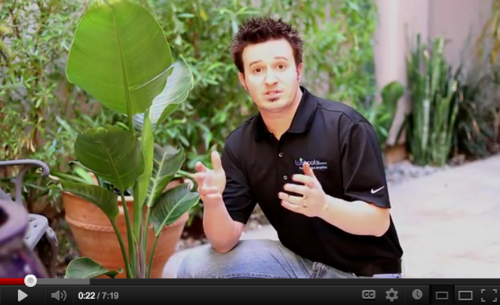
Back in December we added several YouTube videos to our channel and in a couple of them we demonstrated with a white bird of paradise. It's been nearly 6 months since we potted up that plant and I wanted to give you an update on how it's done since then.
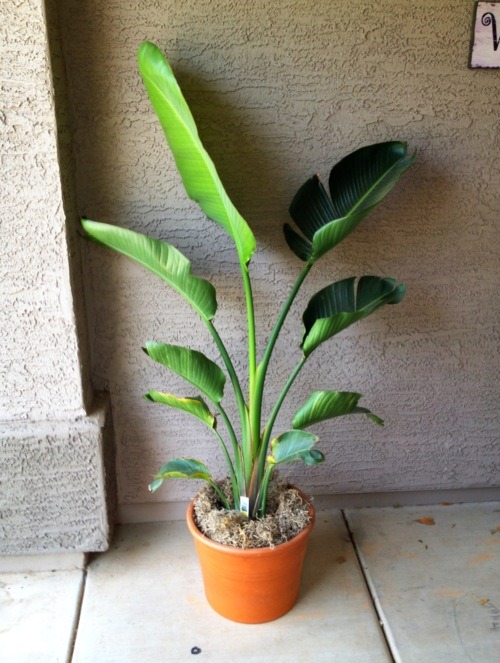
I've kept the plant on the north side of my house (zero direct sunlight) since that December video shoot, filling it once every two weeks using our dyna-gro fertilizer several times. Other than dusting it a couple times, I've given it zero attention and the LushPot keeps the plant looking good! I know if I gave this guy more direct sunlight on the south side of my house it would start to grow like crazy, but for my doorway entrance, it's been wonderful.
0 notes
Photo
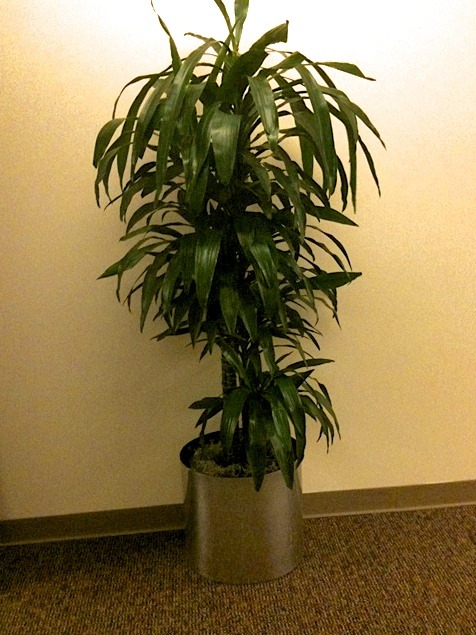
This plant has been in a LushPot for 1 year and is in an area with very low light!
Post your photo testimony!
0 notes
Quote
I have had 'brown thumb' problems in the past and have killed every plant that entered my home. With the LushPots, I have thriving plants in my living room. I have a peace lily, an ironcross begonia and an auralia tree each in a LushPot. They are all thriving and did not even exhibit any shock symptoms after planting. I refill the pots about every two weeks - it is still warm in San Diego. As to fit them to decorative containers, I bought two to fit existing containers and took the third one with me to the store to find just the right one. Again, the product is great, the planting was easy, and I am a happy plant Mom.
Christine Z
0 notes
Quote
The LushPots the self-watering system works great. You just fill them up and forget about it. Also, they are easy to fill, I just use a regular watering can. Before I used the self-watering system I was killing plants all the time because I could not water them on a regular basis. I have maidenhair ferns and with the self-watering system I refill just once a week. Thank you for making them available. It is an incredible product!
David G
0 notes
Text
Let In Some Light

LushPots monitor the most difficult task in keeping houseplants: watering schedule. But some plants require much more than a balanced watering schedule... Light plays a huge part and being selective about where you place your house plants can play a huge factor in weather or not they will remain healthy.
North Rooms
Light is necessary for photosynthesis. Most usable light inside of the average home comes from its windows. Plants that are far away from a window, especially windows on the North side of the home, will most always be living in a low light situation. Make sure when you are selecting a plant for these low light areas that you select a plant which is better at tolerating low sunlight. Something as simple as picking the right plant for the light conditions will set you up for "green thumb" success.
West & East Rooms
Likewise, Eastern rooms that have windows will have pretty good light in the mornings. Of course you'll want to make a note if there is a large overhangs or large shade trees or any other obstructions that cut down on the available light to the plant. Plants near these East windows will find themselves in what could be considered a medium light situation. Plants further away from the window would still be considered in low light. Lighting in a west room will be nearly identical to that of it's Eastern counterpart, but the bulk of their light comes in the afternoon.
South Rooms
As you would probably expect plants on the South side most always have the strongest light. In these high exposure South rooms it is reasonable to categorize placement of a plant near the window as high light while plants further back would find themselves in what we consider medium light. It is VERY IMPORTANT that you do your best to match the plant light needs/tolerance to the lighting exposure of the room.
Something else to keep in mind is that if your home is like mine dust gathers on everything, including the plants. Many don't realize it but the dust itself acts as shade to the leaf and reduces the amount of light available to the plant. It is important to dust your plants with a good ostrich feather duster to keep them clean as well as looking good.
Share your thoughts, comments and tips below.
0 notes